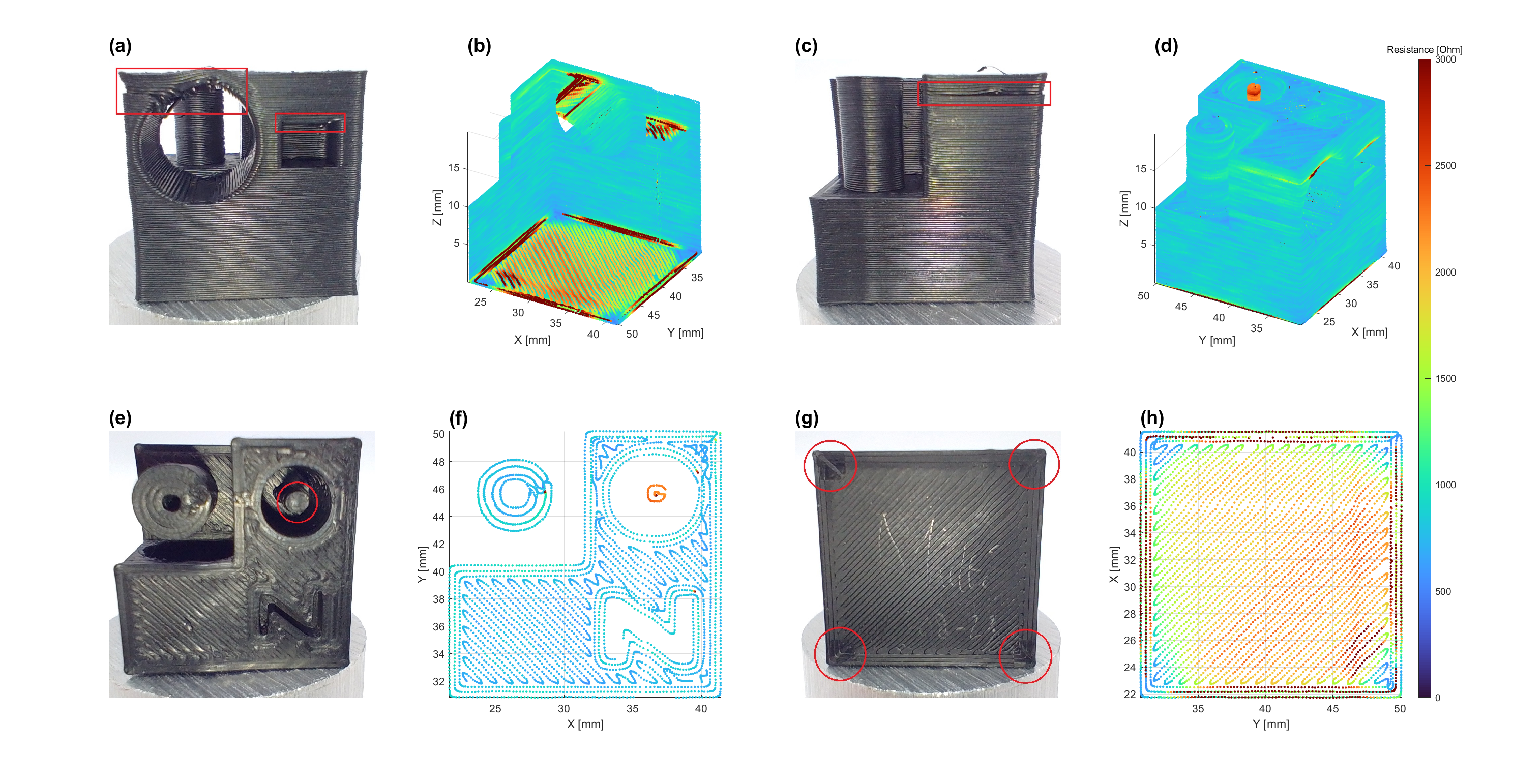Motivation
3D printing has revolutionised prototyping and small batch fabrication, filling the gap left by conventional techniques such as machining, casting and injection moulding where the required numbers do not justify the larger costs and lead times. Many 3D printing methodologies operate by constructing parts in a layer-by-layer fashion, with techniques being differentiated by the manner wherein the materials are being deposited and fused [1].
One of the most widely adopted methodologies is the process of Fused Filament Fabrication (FFF), where a polymer filament is molten and deposited line-by-line to construct the part out of these so-called ‘track-elements’ or ‘traxels’ for short. In these processes, the speed and precision are often a trade-off, due to the difficulty in physically determining what exactly happens during the deposition of the material onto the print-bed. This difficulty is worsened by the open-loop nature of the 3D printing process, with most FFF printers not even including feedback in their motion system, and the uncertainties in materials, processes and product deficits [2].
The ideal solution to these issues would be to have a methodology that is able to directly observe the printing process and its parameters in real time [3, 2, 4]. The PET (Printing Electro Tomography) methodology proposes to make use of electrically conductive materials whilst measuring the impedance of the printed part, to directly study the fusion of the traxels in the deposited part. Given the inverse nature of the measurement that results, a tomography method will be developed to arrive at a full description of the print and its associated quality.
Origin
The PET project originated from the PortWings ERC project (Project ID 787675), which included a research line focused on the exploration of smart material fabrication with additive manufacturing for sensors and actuators. The first application of the proposed conductive material measurements through the employment of built surface electrodes resulted from an investigation into contact formation when interfacing printed sensors with conventional metal conductors.
Publications
During the initial period of the PET ERC project (Project ID 101069261), the methodology was shown to be a viable monitoring technique with great promise for print quality observation, resulting in a publication in Nature Scientific Reports [5]. Currently, several expansions upon the basis outlined in this work are being explored focusing on themes such as calibration, extrusion and multiplexing methodologies.

References:
[1] Gibson, I., Rosen, D.W., Stucker, B. 2010. “Additive Manufacturing Technologies.” 2010.
https://doi.org/10.1007/978-1-4419-1120-9.
[2] Oleff, A., Küster, B., Stonis, M. et al. 2021. “Process monitoring for material extrusion additive manufacturing: a state-of-the-art review.” Progress in Additive Manufacturing.
https://doi.org/10.1007/s40964-021-00192-4
[3] Migler, K., Ricker, R., 2016. “Measurement Science Roadmap for Polymer-Based Additive Manufacturing, Advanced Manufacturing Series.” National Institute of Standards and Technology.
https://doi.org/10.6028/NIST.AMS.100-5
[4] Fu, Y., Downey, A., Yuan, L., Pratt, A., Balogun, Y. 2021. "In situ monitoring for fused filament fabrication process: A review." Additive Manufacturing, 38, art. no. 101749.
https://doi.org/10.1016/j.addma.2020.101749
[5] Jonkers, H., Dijkshoorn, A., Stramigioli, S. et al. FFF print defect characterization through in-situ electrical resistance monitoring. Sci Rep 14, 11906 (2024).
https://doi.org/10.1038/s41598-024-59053-z
